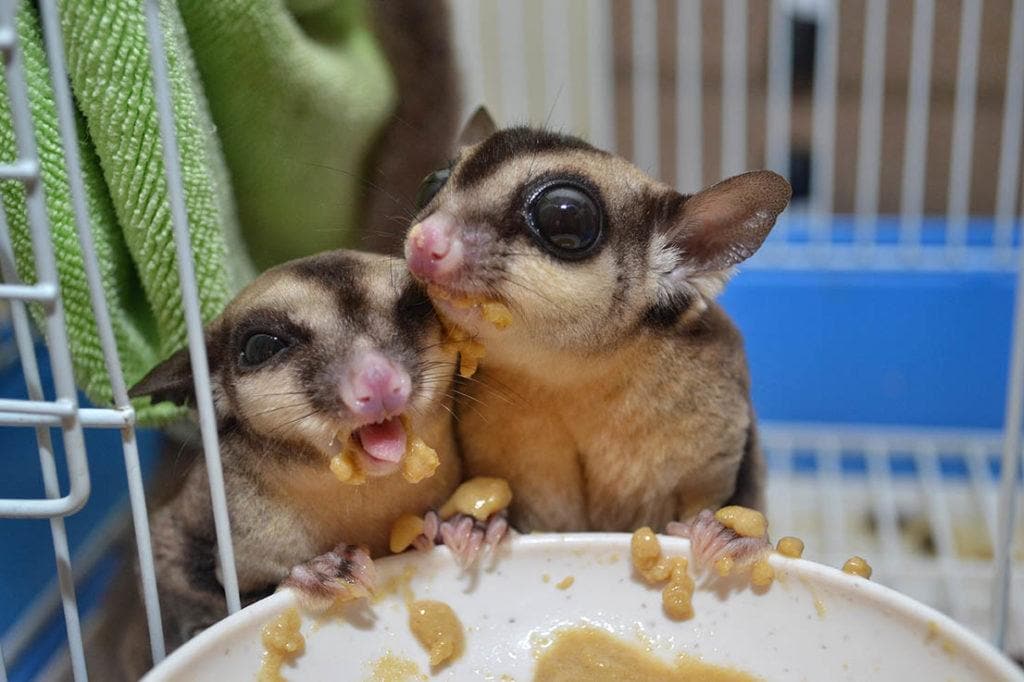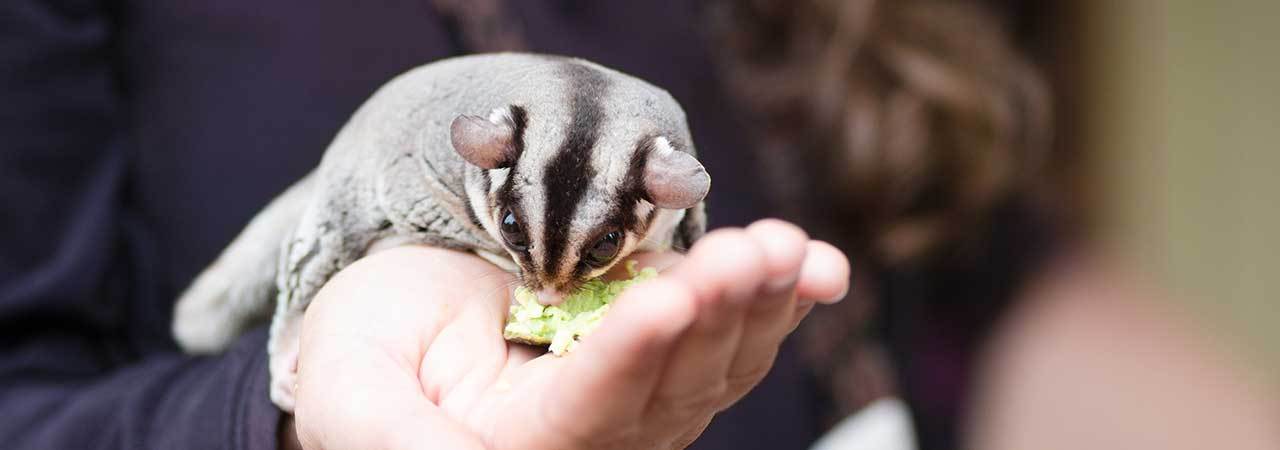

The 'Free Choice' Glide-R-Chow Feeding Method Now, obviously some people have a stronger sense of smell than others, so if you’re particularly sensitive you may notice them more than most people. Over the last 15 years, we’ve found that Sugar gliders who are PRIMARILY fed Glide-R-Chow ™ & fruits & vegetables as their two MAIN foods (and then OCCASIONALLY given a WIDE range of TREATS like a piece of cooked meat, boiled eggs, or other ’human’ foods that they love) will have very little odor if at all – and instead have a very pleasant smell that a lot of our customers say smells like a “puppy”. It is specifically designed for Sugar gliders… it gives them ALL the protein they’ll ever need… and Sugar gliders LOVE to eat it because it has a special fruity flavor that they just go NUTS for. Over the years, we’ve tested ALL kinds of different protein-based foods that “claim” to eliminate odors in Sugar gliders, but we’ve never found anything that works NEARLY as well a special, dry pelleted food called “Glide-R-Chow ™”. Now, fortunately, this is a VERY easy problem to fix – because as long as you just feed your Sugar gliders the right protein food, you’ll NEVER have to worry about them smelling bad.
#SUGAR GLIDER FOOD HOW TO#
How to Keep Your Sugar Glider from Developing an Odor

Now, it’s not anything nearly as strong as a ferret’s smell, but it is a little strong for most people’s taste. In captivity though, IF your Sugar glider’s diet contains a high percentage of live food or meat, it WILL develop a musky odor. The other 25% would be what we call “LIVE” food like insects, baby birds, bird eggs, etc. In the wild, a Sugar glider’s diet consists of roughly 75% gums, saps and nectars taken from different kinds of plants and trees. The first is protein, the second is fresh fruits and vegetables and the last thing is just a quick vitamin supplement that fills in all the gaps. Keep in mind, like we said earlier, Sugar gliders will eat almost ANYTHING you put in front of them – and ENJOY IT – but having raised tens of thousands of these happy and healthy little animals for the last 15 years, we can tell you for a FACT that there are really only THREE basic types of nutrition they need. Well, the fact is that many of these diets are perfectly fine – and while they won’t necessarily harm an ADULT Sugar glider – the simple truth is that there’s just NO real reason to make the feeding process a big complicated ORDEAL every day.

Three Basic Components for a Healthy Sugar Glider Diet Now what we mean by that is this… If you spend just a few minutes cruising websites out on the internet, you will find literally DOZENS of extremely complex, time-consuming – and sometimes expensive – methods and strategies for feeding Sugar gliders – and in almost every case, these self-proclaimed internet experts claim that THEIR way is the best – and only way – you should feed your Sugar gliders… and if you do anything ELSE – it’s could HURT your Sugar glider!. Now, having said that, when it comes to giving your Sugar gliders the PROPER nutrition they need, there are basically TWO ways to do it – the EASY way – and the hard way…and EITHER way, they will be equally happy and healthy. First off, you need to understand that Sugar gliders are OMNIVOROUS – which for the rest of us NON-SCIENTIST TYPES out there means that they will eat just about ANYTHING you put in front of them… Two Ways to Deliver the Proper Sugar Glider Diet Now,…Let’s start with one of the most MISUNDERSTOOD and EXAGGERATED parts of raising Sugar gliders – and that is WHAT to feed them…. The first is the feeding and the protection of your Sugar glider – and the second is how to get your new baby Sugar gliders to BOND with you and your whole family – in such a way that you can’t WAIT to see each other every day!… Common Misconceptions about Feeding Your Sugar Glider When it comes to raising a happy and healthy BABY Sugar glider, we’re REALLY talking about TWO things.


 0 kommentar(er)
0 kommentar(er)
